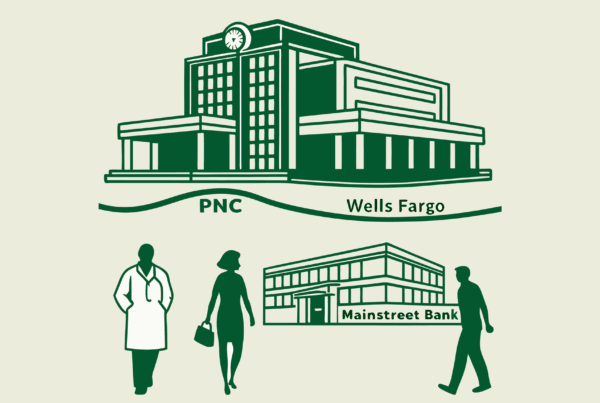This guide is for owners of Gastroenterology and Hepatology practices in the St. Louis area. Whether you are planning a sale in the next few years or are just curious about your practice’s current market value, understanding the landscape is the first step. The market is active, and buyers are looking for quality practices like yours. Proper preparation is the key to a successful transition that honors your legacy and achieves your financial goals.
Market Overview
The St. Louis GI & Hepatology market is currently a dynamic environment for practice owners considering a sale. High demand for gastroenterology services, combined with a national shortage of specialists, has drawn significant interest from well-capitalized buyers. This creates a favorable seller’s market, but also a more complex one to navigate. Understanding this landscape is the first step toward a successful transition, and strategic preparation can turn strong interest into a premium valuation for your life’s work.
Market Overview
The St. Louis market for GI & Hepatology practices is strong. We see two main types of buyers actively seeking practices here. The first is private equity groups looking to build regional or national platforms. The second is local and regional health systems aiming to expand their gastroenterology service lines.
This demand is driven by favorable demographic trends and a consistent need for GI care. For you as a practice owner, this means you likely have multiple options. It also means buyers are sophisticated. They look for well-run practices with stable referral patterns and modern facilities. The key takeaway is that your St. Louis GI practice is a valuable asset in today’s market, and buyers are looking for opportunities.
Key Considerations
Before pursuing a sale, it is helpful to assess your practice from a buyer’s perspective. The work you do here, even years before a sale, can significantly impact your final outcome.
Financial & Operational Health
Buyers want to see clean, clear financials. We often find that a practice’s true profitability, or Adjusted EBITDA, is much higher than what shows up on paper after accounting for personal expenses run through the business. Having this number clearly defined is the foundation of your valuation. Beyond that, consider your reliance on specific referral sources or insurance payers. A diversified, low-risk operation always commands a higher price.
Ancillary Service Lines
Does your practice have an in-office endoscopy suite or other ancillary services? These are significant value drivers for GI practices. Buyers see them as high-margin, stable revenue streams that are already integrated into the business. If you have them, we need to highlight their financial contribution. If you do not, that can be a factor in your strategic positioning.
Your Personal Timeline & Goals
Thinking about selling in 2-3 years is not too early to start planning. It’s the perfect time. Preparing now allows you to make small operational adjustments that can dramatically increase your valuation. It also gives you time to clearly define what you want post-sale. Do you want to work for two more years? Retire immediately? Retain some ownership? Knowing your goals directs the entire process.
Market Activity
The St. Louis region is seeing robust M&A activity in the GI space. Private equity-backed groups are actively looking for both large “platform” practices to enter the market and smaller “tuck-in” practices to add to their existing network. This means that practices of all sizes can be attractive targets.
What we are seeing is a shift from one-off sales to structured, competitive processes. A single, unsolicited offer you receive is rarely the best one available. The highest valuations are achieved when multiple qualified buyers are brought to the table to compete for your practice. This creates leverage and allows you to choose a partner whose vision aligns with your own, not just the one who happened to call first. This competitive tension is a key element of a professionally managed sale process.
The Sale Process
Selling a practice is a structured process with distinct phases. Understanding these steps can help you prepare for the journey ahead. While every deal is unique, nearly all follow this general path. The key is managing each stage to protect your interests and prevent surprises.
| Stage | What It Involves | A Common Pitfall to Avoid |
|---|---|---|
| 1. Preparation | Gathering financial data and normalizing your EBITDA. | Using tax-return profits instead of true cash flow, undervaluing your practice. |
| 2. Marketing | Confidentially presenting the opportunity to vetted buyers. | Discussing a sale with only one buyer, leaving significant money on the table. |
| 3. Negotiation | Evaluating offers (Letters of Intent) and selecting a partner. | Focusing only on price, not on the structure’s impact on your net proceeds. |
| 4. Due Diligence | The buyer’s deep review of your finances and operations. | Unorganized records or unexpected findings that can derail the transaction. |
| 5. Closing | Finalizing legal documents and transferring ownership. | Vague post-sale role definitions leading to future misunderstandings. |
The due diligence phase is where many self-managed sales encounter trouble. Preparing for it thoroughly with an advisor can ensure a smooth final step to closing.
How Your Practice is Valued
The most common question we get from owners is, “What is my practice worth?” The answer is not based on revenue or a simple rule of thumb. Sophisticated buyers value your practice based on a multiple of its Adjusted EBITDA (Earnings Before Interest, Taxes, Depreciation, and Amortization).
Think of Adjusted EBITDA as your practice’s true cash flow. We calculate it by taking your net income and adding back owner-specific expenses like an above-market salary, personal car leases, or family members on payroll. For example, a practice with $500,000 in net income might have an Adjusted EBITDA of $700,000 or more. This higher number is what buyers value. They then apply a multiple (e.g., 6x) to this figure to arrive at a valuation. For a strong, multi-provider GI practice, this multiple can range from 5.5x to over 7.5x in today’s market. The story you tell, your growth potential, and operational strengths all influence that multiple.
Planning for Life After the Sale
A successful transaction goes beyond the closing date. Your plan should account for your personal, professional, and financial goals for the years that follow. The structure of the deal is where you can protect what matters most to you.
Defining Your Future Role
Many physicians continue to work in their practice for a period after the sale. This is often a key desire of the buyer, ensuring a smooth transition for patients and staff. Your employment agreement, negotiated as part of the deal, will clearly define your compensation, responsibilities, and timeline. This gives you predictability and control over your transition into retirement.
Securing Your Legacy and Staff
You have spent years building a team and a reputation. The right partner will want to preserve that culture. We help you negotiate terms that protect your key staff and ensure the standard of care you established continues. This is not just a ‘soft’ issue. It is a critical part of finding a partner who is a good cultural fit.
The “Second Bite of the Apple”
Many of today’s deals involve rolling over a portion of your sale proceeds (typically 10-30%) into equity in the new, larger company. While this means less cash at close, it gives you ownership in a growing platform. When that platform is sold again in 5-7 years, you get a “second bite of the apple” that can be financially significant. This is how many owners build true generational wealth.
Frequently Asked Questions
What is the current market demand for GI & Hepatology practices in St. Louis?
The St. Louis GI & Hepatology market is currently strong and active due to high demand for gastroenterology services coupled with a national shortage of specialists. Buyers, including private equity groups and regional health systems, are actively seeking quality practices in the area.
What financial metrics should I focus on when selling my GI practice?
Buyers primarily value your practice based on Adjusted EBITDA, which reflects true cash flow after normalizing for personal expenses and owner-specific costs. Having clear, clean financials and showing a diversified payer and referral base can significantly increase your practice valuation.
How can in-office ancillary services affect the value of my GI practice?
Ancillary services such as an in-office endoscopy suite are significant value drivers. They provide high-margin, stable revenue streams that buyers find attractive. Highlighting the financial contribution of these services can enhance your practice’s attractiveness and valuation.
What are the key stages in the sale process of a GI & Hepatology practice?
The sale process typically includes: 1) Preparation – gathering financial data and normalizing EBITDA; 2) Marketing – confidentially presenting to vetted buyers; 3) Negotiation – evaluating offers and selecting partners; 4) Due Diligence – buyer’s detailed review of finances and operations; 5) Closing – finalizing documents and transferring ownership. Managing each stage carefully is critical to a successful sale.
What should I consider for life after selling my GI practice?
Post-sale planning is essential and includes defining your future role, such as continued work under an employment agreement, protecting your staff and practice culture, and considering options like rolling over a portion of proceeds into equity in the new company for potential future financial benefits. This helps secure your legacy and personal goals after the sale.



